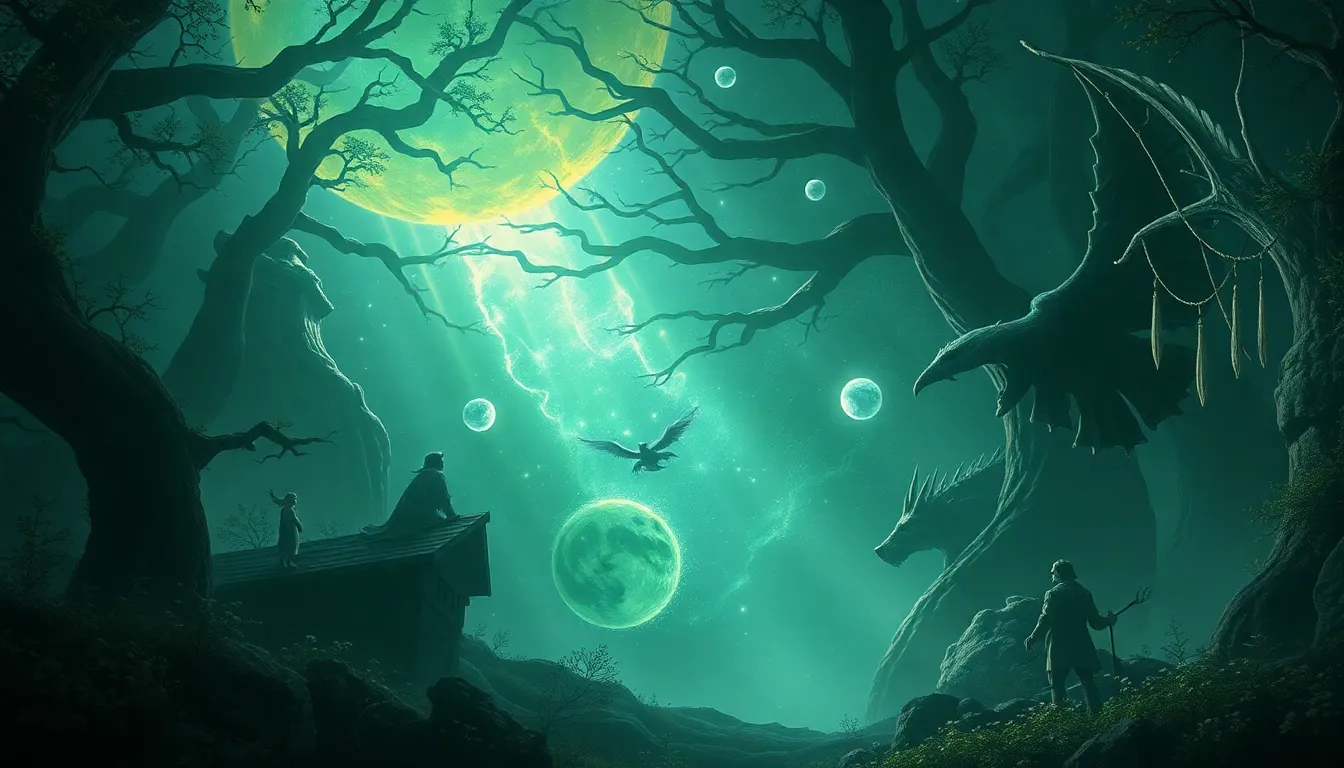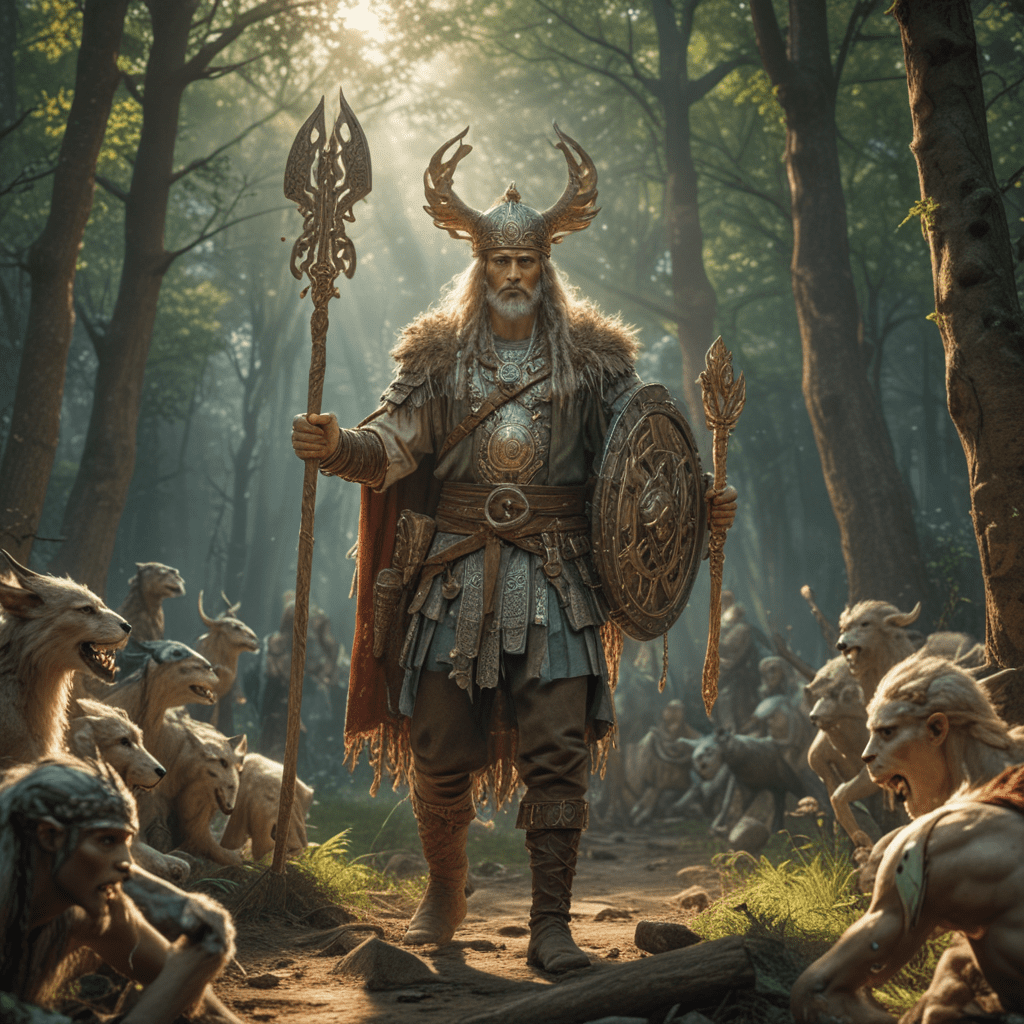The Enchanted Beginning: Creation Myths That Captivate the Imagination
Introduction to Creation Myths
Creation myths serve as fascinating narratives that explain the origins of the universe, humanity, and the world around us. These stories are integral to various cultures, providing insight into their beliefs, values, and understanding of existence. They reflect humanity’s innate curiosity about where we come from and why we are here, offering explanations that often blend the spiritual with the scientific.
The Role of Creation Myths in Human Culture
Creation myths play a crucial role in shaping societal values and beliefs. They serve as foundational stories that inform cultural identity and community cohesion. Through these narratives, societies articulate their understanding of existence, morality, and the natural world. The function of storytelling in preserving cultural identity cannot be overstated, as these myths are passed down through generations, evolving yet remaining rooted in tradition.
Major Themes in Creation Myths
Across cultures, several major themes emerge in creation myths:
- Chaos and Order: Many myths begin with chaos, followed by a divine act of creation that establishes order.
- The Emergence of Life: The transition from inanimate to animate existence is a common motif.
- Light and Darkness: The symbolism of light often represents knowledge and goodness, while darkness signifies ignorance and evil.
Creation Myths from Different Cultures
Creation myths vary widely across cultures, each offering unique insights into human existence. Here are brief summaries of some notable creation myths:
4.1. The Genesis Creation (Judeo-Christian Tradition)
The Genesis creation narrative describes how God created the world in six days, culminating in the creation of humanity on the sixth day. This myth emphasizes the goodness of creation and humanity’s special relationship with the divine.
4.2. The Enuma Elish (Babylonian Mythology)
The Enuma Elish recounts the story of the god Marduk, who defeats the primordial chaos represented by Tiamat. From her body, Marduk creates the heavens and the earth, establishing order in the cosmos and humanity’s place within it.
4.3. The Popol Vuh (Mayan Mythology)
The Popol Vuh tells the story of the creation of humans from maize, highlighting the importance of agriculture in Mayan culture. The narrative includes the adventures of the Hero Twins, who embody themes of life, death, and resurrection.
4.4. The Dreamtime Stories (Aboriginal Australian Mythology)
Aboriginal Australian myths, known as Dreamtime stories, describe the creation of the land, animals, and humans by ancestral beings. These narratives emphasize the interconnectedness of all living things and the spiritual significance of the natural world.
The Role of Deities in Creation Myths
Deities often play a central role in creation myths, with various divine figures embodying different attributes. For example:
- Creator Gods: Many myths feature a singular creator god, often depicted as omnipotent and benevolent.
- Trickster Figures: Some narratives include trickster gods who challenge the status quo, leading to the creation of new forms of life or societal norms.
The relationship between gods and humanity in these narratives varies—from benevolent protectors to capricious beings whose whims dictate human fate.
Nature and the Environment in Creation Myths
Creation myths often explain the origins of natural elements such as land, sea, and sky. Animals and plants hold significant roles in these stories, symbolizing various aspects of life and the environment. For instance:
- Animals as Ancestors: In some cultures, animals are seen as ancestors or spiritual guides.
- Plants as Sustainers: Many myths emphasize the importance of plants, particularly in agricultural societies where they are viewed as life-giving forces.
Parallels and Divergences: A Comparative Analysis
A comparative analysis of creation myths reveals both similarities and differences. Commonalities may include:
- The theme of chaos preceding order.
- The involvement of divine beings in the creation process.
- The significance of natural elements and life forms.
However, divergences exist in how these elements are interpreted and the cultural contexts that shape them. Insights gained from these comparisons enhance our understanding of human thought and experience.
The Psychological and Philosophical Implications of Creation Myths
Creation myths address existential questions about purpose, identity, and the nature of life. They provide frameworks for understanding the universe and humanity’s place within it. The influence of these myths extends to contemporary thought, inspiring philosophical inquiries and influencing modern belief systems.
Modern Interpretations and Adaptations of Creation Myths
Literature, art, and media have reinterpreted ancient creation myths, bringing them into contemporary discourse. These adaptations often highlight timeless themes while making them accessible to modern audiences. The relevance of creation myths persists in today’s world, resonating with people seeking meaning in their existence.
Conclusion: The Enduring Power of Creation Myths
Creation myths hold enduring power, offering rich narratives that help us understand the complexities of human existence. They invite us to explore the diverse tapestry of stories that cultures have woven throughout history. By appreciating these myths, we gain a deeper understanding of ourselves and our place in the universe.




